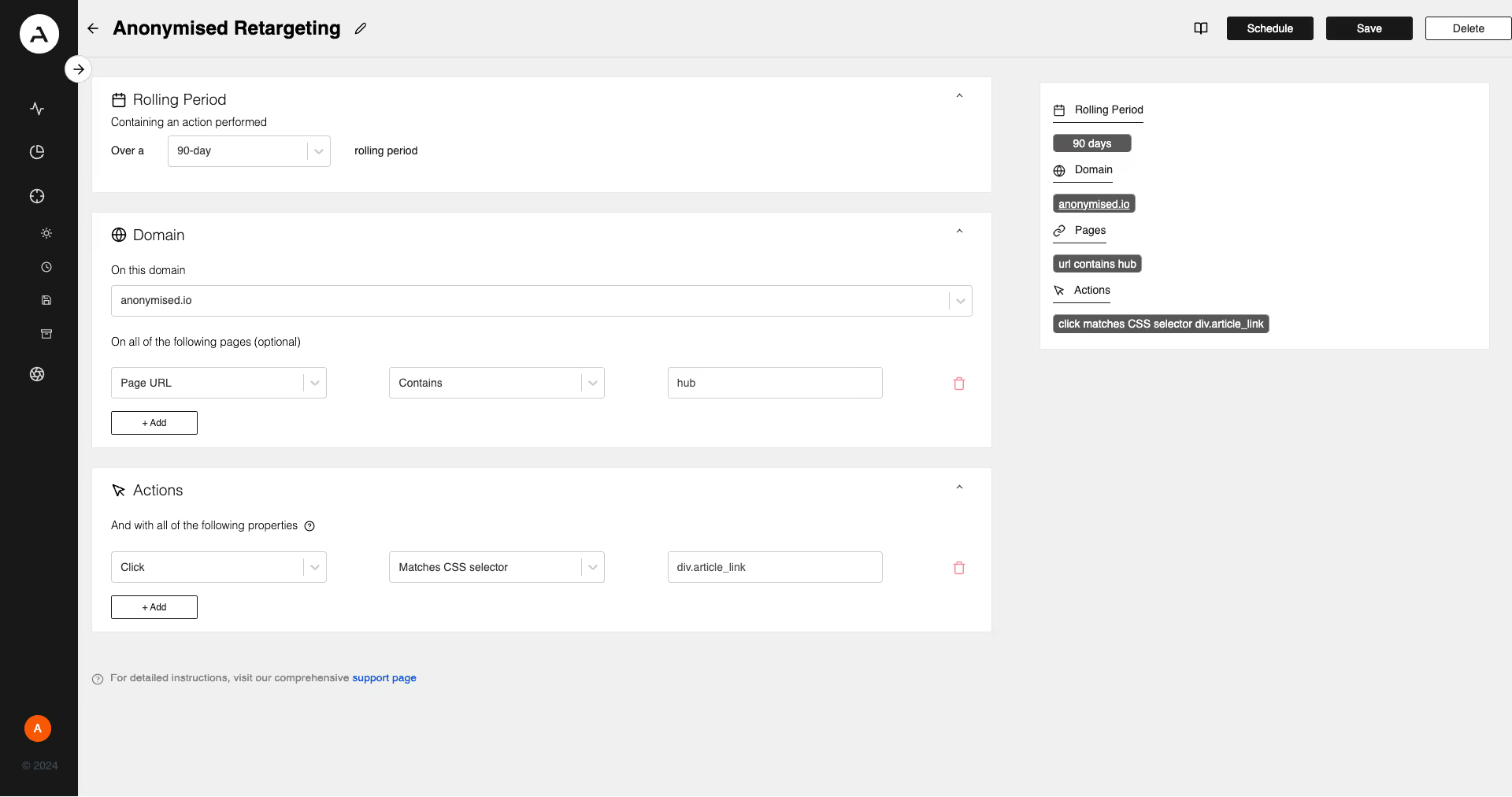It’s recurring industry news, “the cost of acquiring a new user is 6 to 7 times more than the cost of an existing user”. “The chance of converting an existing customer is 3 to 4 times more than that of a new user”. Retargeting works but now, with the decline of third-party cookies, like most things programmatic; it requires adjustment.
Gen AI responses to "how to do retargeting without cookies" and web articles recommending approaches tend to be very generic, full of statements like "use first party data" or "use contextual", with no actual solution recommended.
So what can the seasoned marketer do navigate this space? The solution is simple: just build a retargeting audience with Anonymised.
Our retargeting audiences are identical to our regular audiences with only a change to the criteria that define the segment.
Rather than targeting contextual visitor behaviour, buyers can build segments using specific on-page events, such as:
1. Page or pages visited
2.Specific DOM object actions, such as links or button clicks
3. View of a specific ad or campaign
4. A combination of the points above
Once scheduled, the retargeting audience just needs to pass a k-anonymity threshold of 1,000 members before the segment becomes targetable in ad servers and curated deals.
Define the retargeting criteria is straight-forward:
Rolling period in days. Defines the period over which visitors may join the retargeting audience.
Domain. The domain on which the retargeting will run (not applicable to ad slot retargeting).
Pages. The pages on which visitors will be assigned to the audience. It can be used as the event itself or as part of the event criteria, such as page plus action.
Actions. The on-page event that assigns a visitor to the audience, such as a button or link click
Ad views. any slot viewable event in Google Ad Manager, such as Advertiser ID and Campaign ID, can be used to create a retargeting segment.
Note that page, ad and action criteria can be configured as an absolute path or a partial (wildcard).

Retargeting pre-requisites:
Our clients use Anonymised Retargeting to build scalable bespoke ‘event’ audiences across both Cookieless and ID-Less premium-owned inventory. They do so because they require:
Existing customers, contact your customer success manager or any member of the team.
Download the Anonymised Retargeting product sheet to learn more about this feature.
Else BOOK A DEMO and select Retargeting under ‘product interest’.

Back to hub